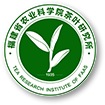Abstract:
Objective Aromatic and functional compositions of the newly introduced clonal tea cultivar, ‘Lingyunbaihao’, and quality of the white tea processed from its leaves were evaluated for production.
Methed Biochemical and aromatic substances in ‘Lingyunbaihao’ and ‘Yunkang 10’ tea leaves plucked in the spring, summer, and autumn of same year were analyzed. Sensory evaluation on the white teas made was conducted by a taste panel.
Results The contents of water extract and amino acids in the steam-blanched Lingyunbaihao young shoots of the 3 seasons were significantly lower than those of Yunkang 10. But those of polyphenols and caffeine were not significantly different. There were 26 volatile aromatics detected in the Lingyunbaihao leaves plucked in the spring, 26 in the summer, and 24 in the autumn. The Lingyunbaihao white tea contained 42.87% of water extract, 5.68% of theanine, 12.33% of polyphenols, and 4.34% of amino acids. It had more fine hair on the unblemished grayish green leaves that released a rich aroma than did Yunkang 10. The brewed tea was mellow and fresh in taste that received a sensory evaluation score of 89.50, which was higher than the Yunkang 10 counterparts. Thirty-four various volatile chemicals were detected in the Lingyunbaihao white tea with ester, accounting for 33.41%, being the highest in content, followed by hydrocarbon that contributed 13.73% of the total. In comparison, the Yunkang 10 white tea had 35 aromatics identified that included esters, also the most with a contribution of 27.44% to the total, and hydrocarbons at 9.01%. Although the Yunkang 10 white tea had one more kind of volatile than the Lingyunbaihao white tea, the latter was higher on all common components in quantity.
Conclusion Overall, the white tea made of Lingyunbaihao leaves was more attractive in appearance and richer and more complex in aromatic constituents than those of Yunkang 10. It was considered a choice cultivar for producing white tea.




 下载:
下载: